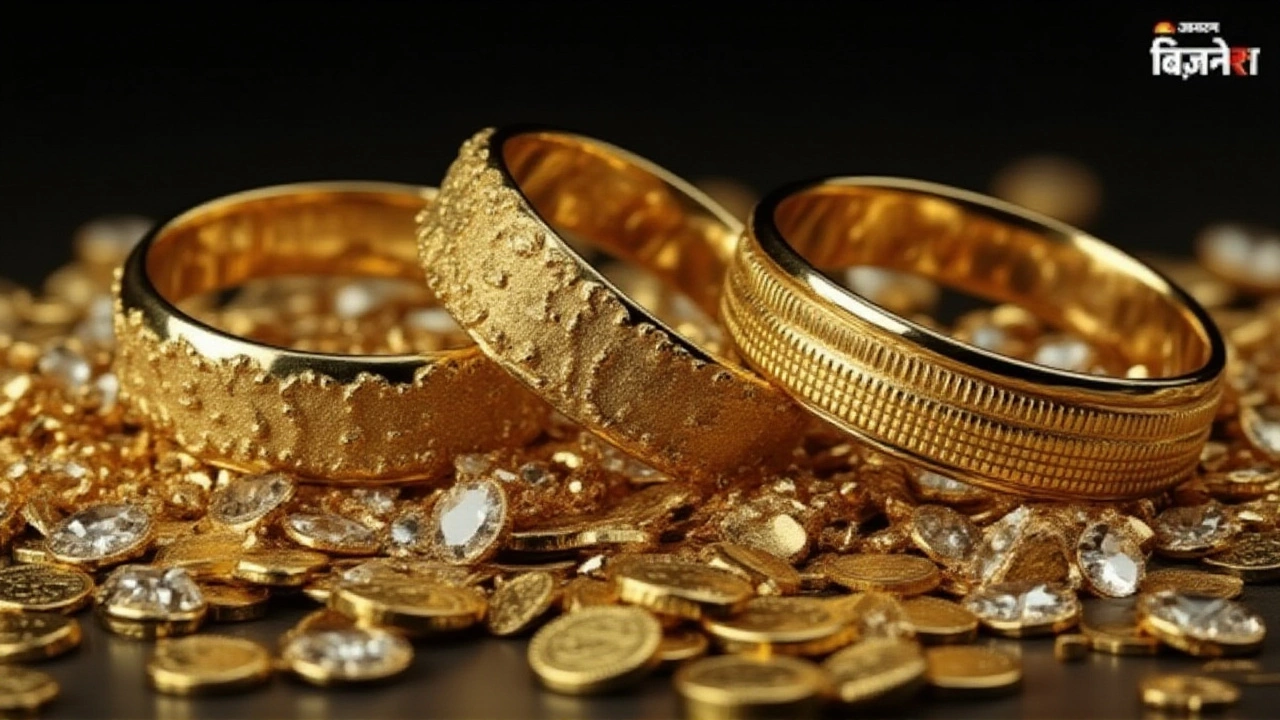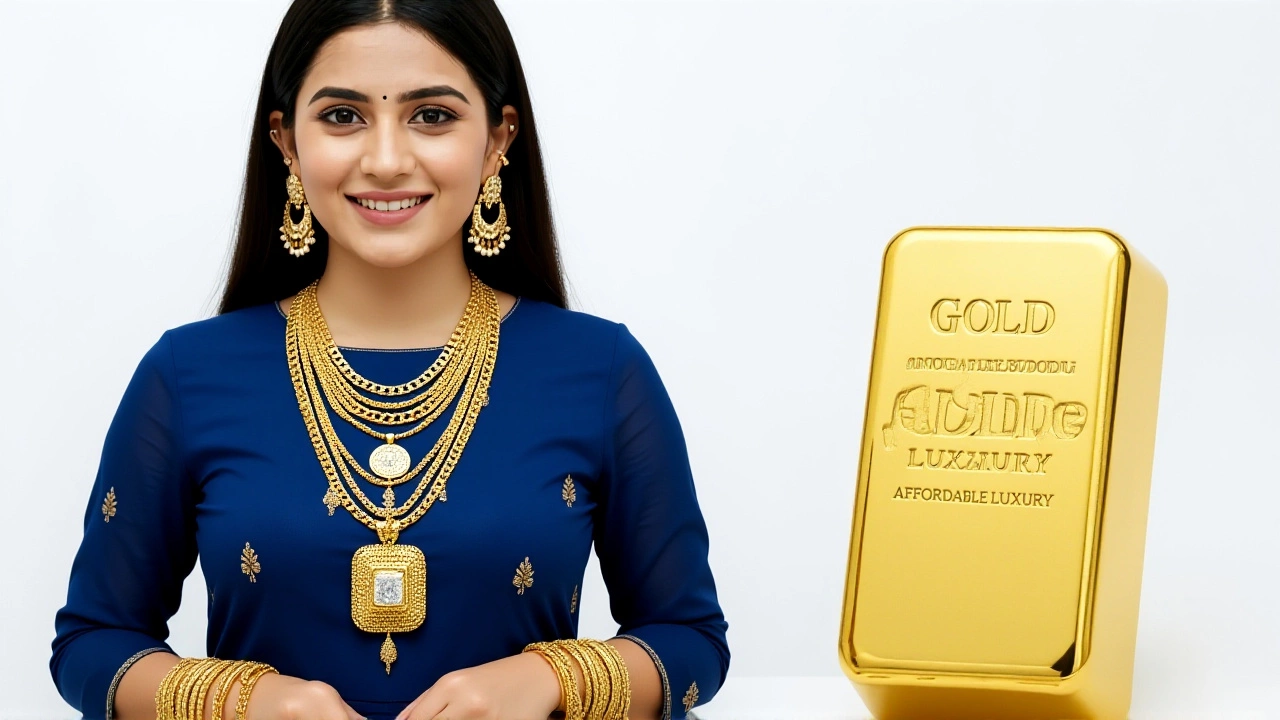When Aksha Kamboj, Vice President of India Bullion & Jewellers Association celebrated the July 2025 government approval for hallmarking 9K gold jewellery, many shoppers assumed a new investment boom was on the horizon. The reality, however, is more nuanced. The approval, announced just weeks before Diwali 2025India, means retailers can now stamp a trusted hallmark on pieces that contain only 37.5% pure gold. With 24K prices soaring to record levels, the lower‑karat option feels like a budget‑friendly gateway, but experts warn it’s a fashion choice, not a wealth‑building one.
Why 9K Gold Jewellery Got a Hallmark Boost
The hallmark system, overseen by the Bureau of Indian Standards, previously covered only 14K‑24K pieces. By adding 9K to the list, the government aimed to formalise a segment that had lived in a regulatory gray zone for years. Rajesh Rokde, Chairman of All India Gem and Jewellery Domestic Council explained that the move builds consumer confidence: “When a mark sits on a piece, buyers know the alloy mix is standardized, which spurs demand, especially from first‑time purchasers.”
Beyond trust, the approval opens doors for exporters. European markets, where 9K pieces are already popular for their durability, are now looking to India for supply. Rokde’s own chain, Rokde Jewellers, has already launched a 14K line called “RARE” to cater to this cross‑border appetite.
How the Numbers Stack Up: Purity vs. Price
Pure gold content is the single most transparent metric for investors. A 22K ring contains 91.6% gold, while a 9K necklace holds just 37.5%. That difference translates into price: as of October 2025, a 10‑gram 22K pendant fetches around ₹7,500, whereas a comparable 9K piece is priced at roughly ₹3,200 – a 57% discount driven largely by the alloy mix of copper, zinc and nickel.
- 24K gold price (per gram): ₹6,800
- 22K gold price (per gram): ₹6,200
- 9K gold price (per gram): ₹2,800
- One‑year physical gold return (ahead of Dhanteras): 66%
- Sovereign Gold Bond return (2025): 153%
Those figures illuminate why the lower‑karat option feels attractive – you can buy more mass for less money. But resale values follow purity, not mass. A 9K piece will typically depreciate in line with its alloy content, not the gold market’s rally.
Expert Voices on Investment Viability
Vijay Kuppa, CEO of InCred Money warned, “Investors must choose the highest purity, typically 22K for jewellery or 24K for coins, bars, and digital gold.” He added that 9K is perfectly fine for everyday wear but not for asset building.
Prithviraj Kothari, Managing Director of RiddiSiddhi Bullions Ltd. echoed the sentiment, stating, “Having a smaller amount of purer gold (18K or 22K) is far superior to a larger amount of 9K gold when you think about resale or investment.”
The consensus is clear: the premium paid for higher karat jewellery pays off when gold prices swing, while 9K items remain tied to fashion cycles.

Consumer Trends: Gen Z and the Affordability Factor
India Today’s September 23, 2025 report highlighted a surge in 9K purchases among Gen Z shoppers in metros like Bengaluru and Mumbai. The appeal lies in the “designer‑look for a student‑budget” narrative. With the average Indian household spending ₹8,000‑₹12,000 on Diwali jewellery, a 9K set fits comfortably within that range.
Rokde noted that the export‑driven commodity also feeds domestic fashion houses, which are now releasing capsule collections that blend Western aesthetics with Indian motifs—all in 9K or 14K metal.
What This Means for Diwali Shoppers
As families line up at jewellery stores from late October through early November, the choice boils down to intent. If the goal is to gift a beautiful piece that lasts through festivals and daily wear, 9K is a sensible pick. If the objective is to hedge against inflation or diversify a portfolio, the advice from Kuppa, Kothari and the RBI’s recent 153% return on Sovereign Gold Bonds (announced October 2025) points to higher‑purity options.
In practice, many consumers adopt a hybrid approach: a 9K or 14K chain for everyday outfits, complemented by a 22K pendant or a 24K sovereign bond for long‑term wealth. The hallmarking rule simply ensures that the 9K pieces sold this season carry a verified alloy composition, shielding buyers from sub‑standard knock‑offs.

Key Takeaways
- Government hallmarking now includes 9K, giving it a regulatory seal of quality.
- 9K gold contains 37.5% pure gold; 22K holds 91.6%.
- Experts agree 9K is best suited for fashion, not investment.
- Higher‑purity gold and sovereign bonds delivered far superior returns in 2025.
- Gen Z buyers are driving demand for affordable, hallmark‑certified jewellery.
Frequently Asked Questions
Will buying 9K gold jewellery help me build wealth?
No. While 9K pieces are cheaper and look great, their resale value tracks the alloy mix, not the gold market. For wealth building, 22K jewellery, 24K coins, bars, or Sovereign Gold Bonds offer far better returns.
What does hallmarking mean for 9K jewellery?
Hallmarking guarantees that a 9K item contains exactly 37.5% gold and meets the alloy standards set by the Bureau of Indian Standards, protecting buyers from sub‑standard or mislabeled products.
Why are younger consumers leaning toward 9K gold?
Gen Z shoppers value affordable style and quick entry into the jewellery market. The lower price point lets them buy fashionable pieces without stretching their budgets, especially during the Diwali gifting season.
How does 9K gold compare to 14K and 18K in terms of durability?
Because 9K contains a higher proportion of alloy metals, it is actually more durable for daily wear than higher‑karat pieces, which are softer. This makes 9K a practical choice for jewellery that endures frequent handling.
Should I consider a mix of 9K jewellery and sovereign bonds for Diwali?
A balanced approach works well: purchase 9K or 14K pieces for gifting and everyday wear, while allocating a portion of your budget to Sovereign Gold Bonds or 22K/24K gold for true investment growth.
